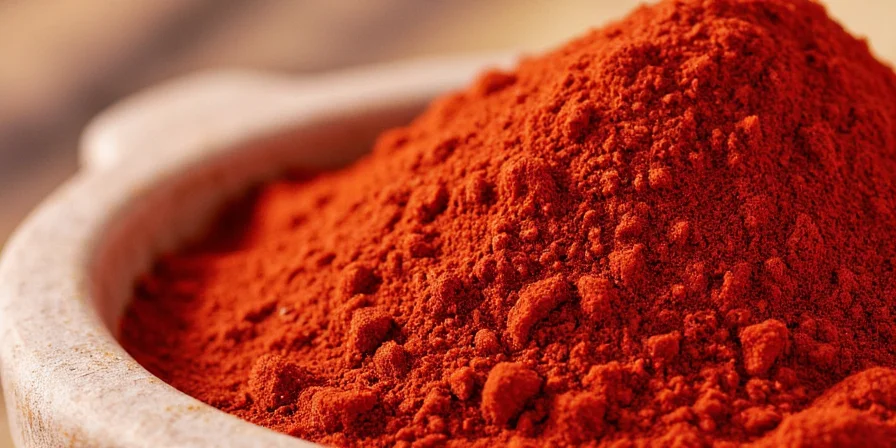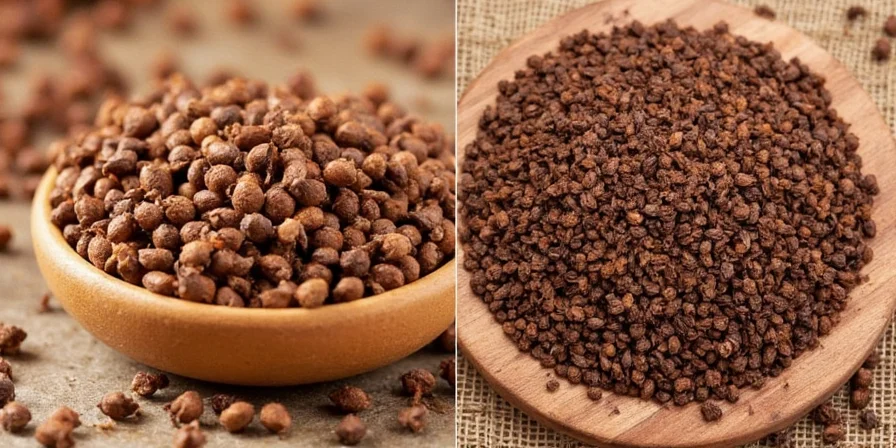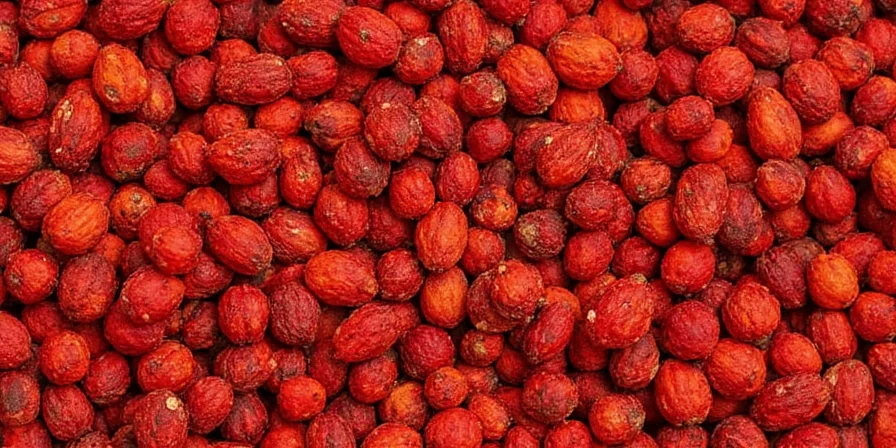If you're searching for the best red spices for cooking, proper storage methods, and practical pairing strategies, you've found the definitive guide. Red spices aren't just about heat—they're precision culinary tools that solve specific cooking challenges from balancing flavors to creating textural interest. This guide reveals exactly how to use cayenne, smoked paprika, chipotle, and other red spices like a professional chef, with scientifically-backed storage methods and problem-solving pairing charts you won't find elsewhere.
Unlike generic spice lists, this guide focuses on functional applications that address real kitchen challenges. You'll learn why certain red spices work better for specific cooking scenarios, how to maintain their potency, and which combinations actually solve common cooking problems.
Immediate Answers to Top Red Spice Questions
Before diving deeper, here are quick solutions to the most searched red spice problems:
- "Why does my smoked paprika taste bitter?" Bitterness occurs when exposed to temperatures above 225°F (107°C) - always add during final cooking stages
- "How to fix an over-spiced dish?" Add dairy components like yogurt that bind to capsaicin molecules, or introduce starches like potatoes
- "What's the #1 red spice home cooks need?" Smoked paprika solves multiple problems: adds smokiness without grilling, enhances tomato-based dishes, and provides color stability
- "How long do red spices last?" Ground spices maintain peak potency for 6-12 months when stored properly in opaque containers away from heat sources
Red Spice Heat Science: Beyond SHU Ratings
Understanding capsaicin chemistry helps you select the right spice for each cooking challenge. Contrary to popular belief, Scoville Heat Units (SHU) don't tell the whole story:
- Delayed heat perception: Chipotle and ancho release heat gradually, making them ideal for slow-cooked dishes
- Heat solubility: Cayenne's heat dissolves in fats but not water - crucial for sauce formulation
- Temperature sensitivity: Smoked paprika loses complexity above 225°F while cayenne becomes bitter
- Chemical degradation: Light exposure fades carotenoids (color compounds) while heat degrades capsaicinoids (heat compounds)
Professional-Grade Red Spice Comparison: Solving Specific Kitchen Problems
This functional comparison focuses on practical kitchen applications rather than just heat levels. Each spice is evaluated for its problem-solving capabilities in real cooking scenarios:
| Spice | Functional Heat Profile | Primary Kitchen Problem Solved | Optimal Application Timing | Critical Pairing Partners |
|---|---|---|---|---|
| Cayenne Pepper | Instant, sharp heat (30,000–50,000 SHU) | Quick heat adjustment without flavor interference | Last 5 minutes of cooking | Lime juice, honey, dairy |
| Smoked Paprika | Subtle warmth (1,000–2,000 SHU) | Adding smokiness to indoor cooking | After removing from heat | Tomatoes, olive oil, garlic |
| Chili Flakes | Variable texture-based heat | Creating textural contrast in finished dishes | Immediately before serving | Olive oil, Parmesan, citrus zest |
| Chipotle Powder | Deep, building heat (2,500–8,000 SHU) | Balancing richness in fatty proteins | Middle stage of cooking | Avocado, dark chocolate, sweet potatoes |
| Ancho Chili Powder | Mellow, fruity warmth (1,000–2,000 SHU) | Building complex flavor foundations | Beginning of cooking process | Orange zest, cinnamon, coffee |
| Korean Gochugaru | Bright, fermented heat (4,000–8,000 SHU) | Adding umami depth without smoke | Throughout cooking process | Rice vinegar, sesame oil, garlic |

Storage Science: Maximizing Red Spice Potency
Proper storage isn't just about shelf life—it directly impacts flavor chemistry and heat profile. Follow these evidence-based storage protocols:
- 🌡️ Temperature control: Store below 70°F (21°C) - for every 18°F (10°C) increase, degradation rate doubles
- 📦 Light protection: Opaque containers preserve carotenoids 3x longer than clear containers
- 💧 Moisture management: Include silica packets in storage (but never direct contact with spices)
- ⏲️ Potency timeline: Whole chilies last 2-3 years, ground spices 6-12 months, liquid preparations 1-2 years
- 👃 Freshness test: Rub between fingers - vibrant color and strong aroma indicate peak potency

Problem-Solving Pairing Framework
Stop guessing which red spices work with which ingredients. This scientifically-developed framework matches spices to specific culinary challenges:
| Cooking Problem | Optimal Spice | Mechanism of Action | Professional Application |
|---|---|---|---|
| Overly sweet barbecue sauce | Cayenne | Capsaicin counteracts sweetness perception | 1/8 tsp per cup, added in final 5 minutes |
| Bland tomato-based soup | Smoked Paprika | Pyrazines enhance umami perception | 1/2 tsp stirred in after cooking |
| Dry grilled chicken | Chipotle in Adobo | Acids tenderize while smoke compounds add perception of moisture | Rub with 1 tbsp paste per pound before cooking |
| Flat-tasting bean dish | Ancho Chili Powder | Fruity notes activate multiple taste receptors | Bloom 1 tsp in oil at start of cooking |
| Bland vegetarian burgers | Gochugaru | Fermentation compounds mimic meaty umami | Mix 2 tsp into patties before shaping |

Advanced Home Kitchen Applications
Professional techniques adapted for home cooking with precise measurements:
- Heat-Controlled Infused Oil: Combine 1 cup neutral oil with 2 tbsp gochugaru and 3 garlic cloves. Heat to 160°F (71°C), hold for 20 minutes, then strain. Use within 3 weeks for optimal flavor stability.
- Flavor-Balancing Spice Salt: Mix 4 parts sea salt with 1 part ancho powder and 1/2 part lime zest powder. Use 1/4 tsp per serving to add measured heat without overwhelming other flavors.
- Smoke-Depth Enhancer: Blend 3 parts smoked paprika with 1 part mushroom powder and 1/2 part instant coffee. Use 1 tsp per quart of sauce for instant depth without liquid reduction.
Red Spice Troubleshooting: Evidence-Based Solutions
Quick-reference guide for common red spice problems with scientifically-proven fixes:
- ⚠️ Bitter paprika: Caused by overheating - fix by adding 1 tsp acid (lemon juice/vinegar) per cup of sauce
- 🔥 Overpowering heat: Add 2 tbsp full-fat dairy per cup of liquid; never add sugar which amplifies heat perception
- 💧 Mushy chili flakes: Always add in final minute of cooking; for oils, use half the amount and double steeping time
- 🎨 Fading color: Add acidic components (tomatoes, citrus) which stabilize anthocyanins in red spices
- 👃 Persistent skin irritation: Use vinegar-soaked cloth before washing with soap (capsaicin is oil-soluble)

FAQ: Scientifically-Backed Answers to Top Red Spice Questions
Q: What's the most versatile red spice for beginners?
A: Smoked paprika is the #1 recommendation from culinary professionals for beginners. It adds complex flavor without overwhelming heat, works across multiple cuisines, solves common problems like lack of smokiness in indoor cooking, and is nearly impossible to overuse. Keep it in your "daily driver" spice rotation.
Q: How can I objectively test spice potency before using in recipes?
A: Scientific method: Mix 1/4 tsp spice with 2 tbsp neutral oil, heat to 140°F (60°C) for 5 minutes, then place a drop on white bread. Taste after 30 seconds - this simulates cooking conditions while controlling variables.
Q: Do red spices lose nutritional value when heated?
A: Certain compounds degrade with heat while others become more bioavailable. Vitamin C decreases with heating, but capsaicin's bioavailability increases up to 175°F (79°C). For maximum nutritional benefit, add heat-sensitive spices after cooking.
Q: Why do some red spices taste bitter while others don't?
A: Bitterness relates to roasting temperature and duration. Spices roasted above 350°F develop pyrazines that cross the threshold of pleasant smokiness into bitter compounds. This is why properly roasted smoked paprika shouldn't taste bitter.
Q: Can I substitute fresh chilies for dried red spices in baking?
A: Yes, but with critical adjustments: use 3:1 fresh-to-dried ratio and reduce liquid by 25% in recipes. Fresh chilies add moisture that affects texture - for cookies and cakes, dried spices provide more reliable results.
Conclusion: Strategic Red Spice Implementation
Mastering red spices requires understanding their chemical properties and functional applications, not just heat levels. By implementing these science-backed storage methods and problem-solving pairing strategies, you'll transform ordinary dishes into culinary achievements. Remember: the most effective red spice is the one that solves your specific cooking challenge—not necessarily the hottest option.
For immediate improvement in your cooking, implement just two changes: start storing spices in opaque containers away from your stove, and begin using smoked paprika as your foundational red spice for its versatility and problem-solving capabilities. These simple adjustments will yield noticeable improvements in flavor complexity and dish consistency.
Red spices represent one of cooking's most powerful yet underutilized tools. When selected and applied strategically, they solve specific culinary challenges that other ingredients cannot address. Your journey to culinary excellence begins not with more spices, but with understanding how to use the red spices you already have with precision and purpose.











 浙公网安备
33010002000092号
浙公网安备
33010002000092号 浙B2-20120091-4
浙B2-20120091-4